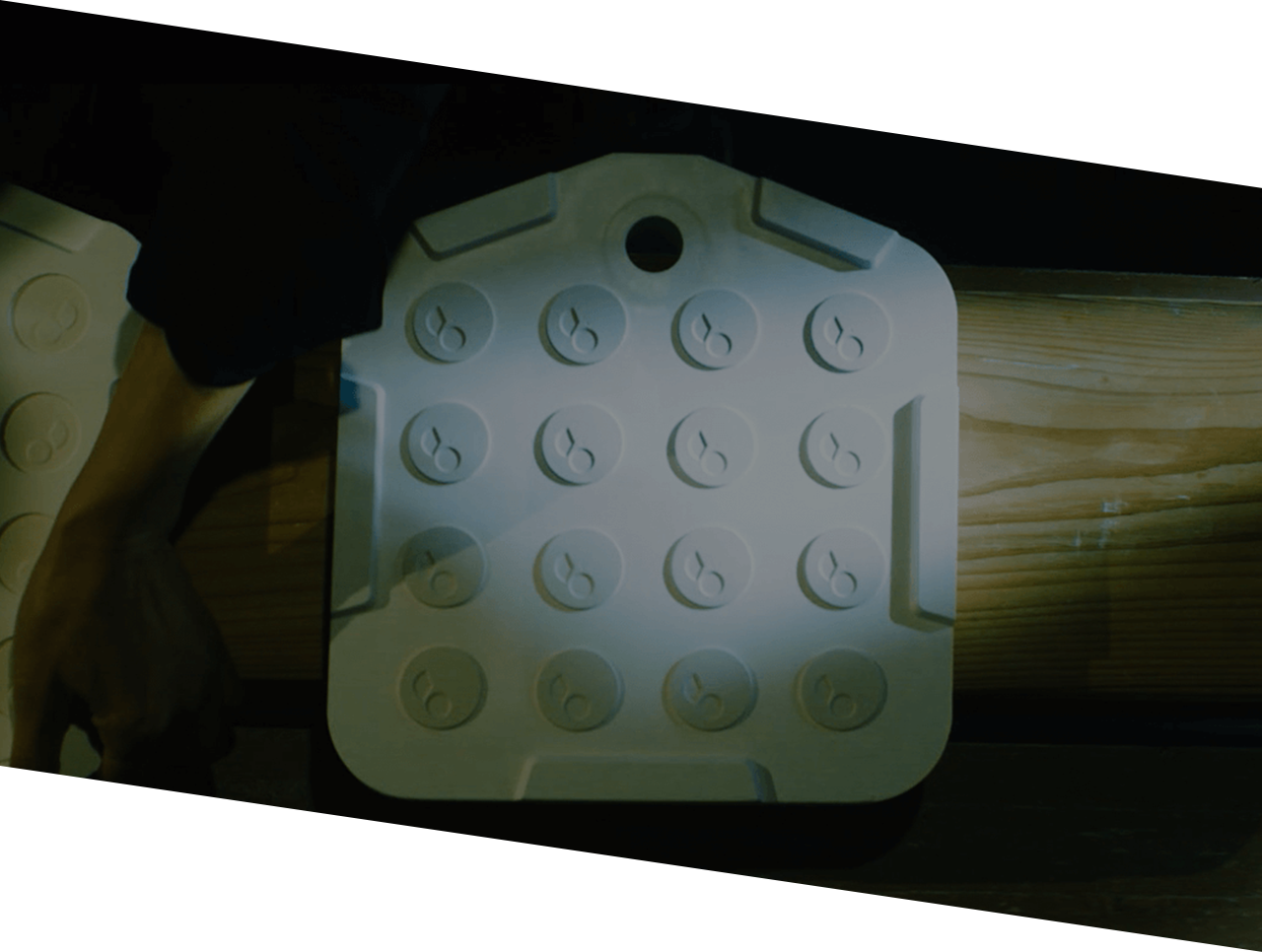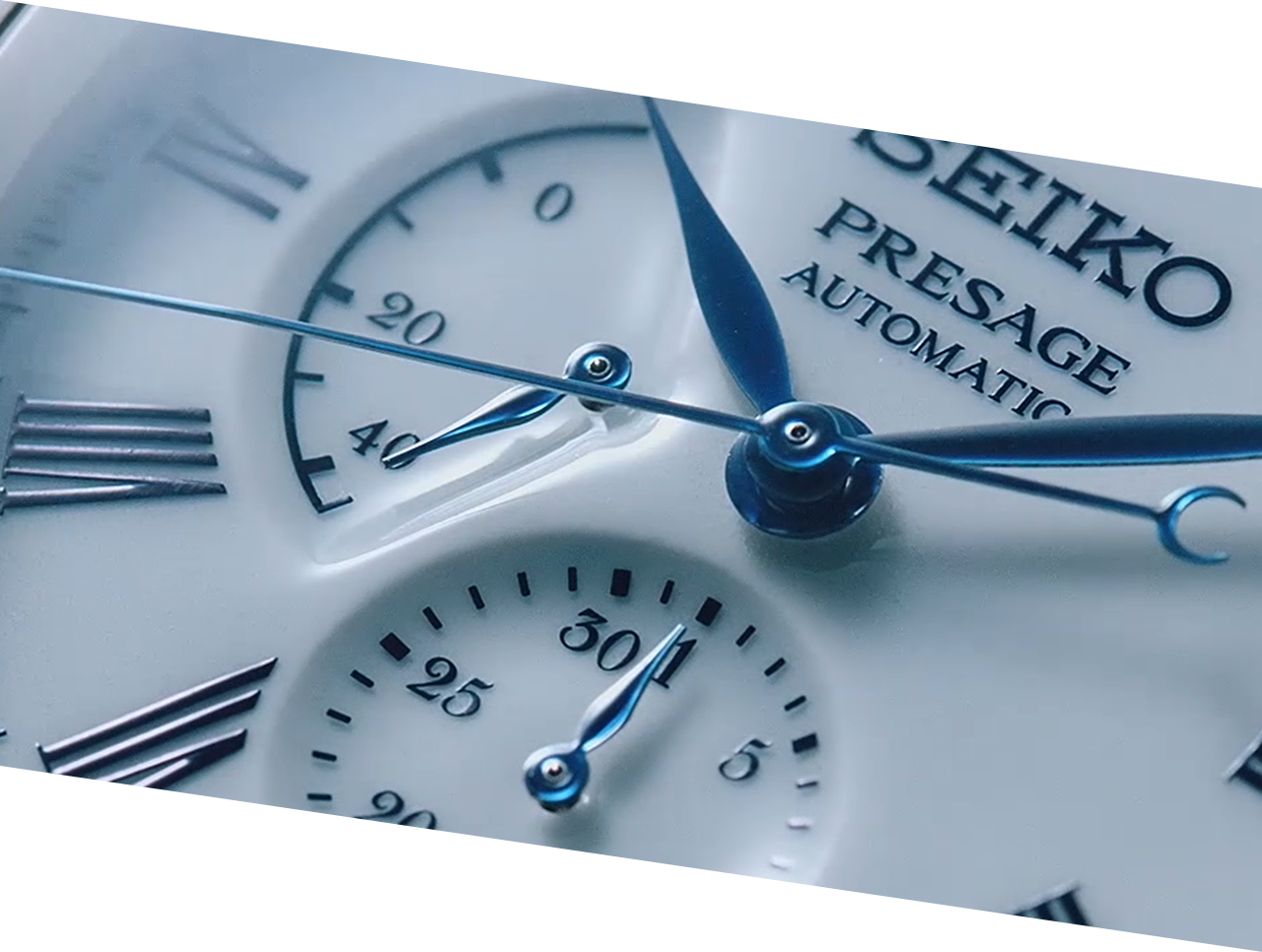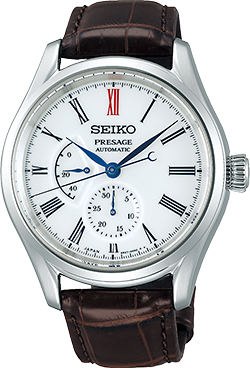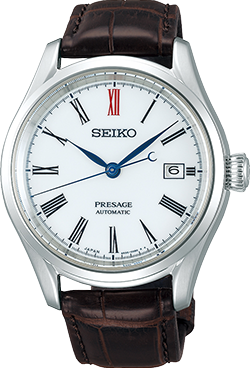Story 06
In the early 1600s, clay suitable for porcelain was discovered in Arita, a small Japanese town in northwest Kyushu, and a new Japanese tradition was born. By the end of the century, Arita porcelain — sometimes known as Imari ware because of the port from which it was shipped — was not only popular in Japan, it had also become a highly coveted status symbol in royal palaces throughout Europe. Enchanted by its delicate beauty, exquisite texture, and intricate, hand-painted designs, European aristocrats competed to learn the secrets of the Arita production process. Consequently, Arita porcelain greatly influenced the development of porcelain making in Europe. For over 400 years, Arita has remained the spiritual center of porcelain crafting in Japan — the oldest kiln goes back to the Edo period — honoring a heritage of artistic mastery that excites collectors and fires the imagination of craftsmen throughout the world. Now Seiko Presage pays tribute to this elegant Japanese tradition with two exceptional timepieces featuring dials of Arita porcelain.
scrollBlending two of Japan’s most notable characteristics — tradition and technology — the Seiko Presage Arita Porcelain is a tribute to the spirit of craftsmanship. Overseen by master craftsman Hiroyuki Hashiguchi, the project involved years of experimentation, for it required a heretofore unknown level of precision; unlike traditional pieces where some variation is acceptable, each dial had to be identical in order to match the exact dimensions of the watch case. Additionally, a new type of Arita porcelain was formulated to increase durability. A high-precision mold is used to ensure the consistency of size, depth and recesses. After drying, the dials are baked at 1300 °C, hand glazed, and baked again. The second firing bonds the glaze to the dial and brings out the subtle blue tint. Finally, holes for the hands and date window are made, and a third baking smoothes the surfaces. The result is a dial that radiates perfection, a hallmark of Arita porcelain.
-
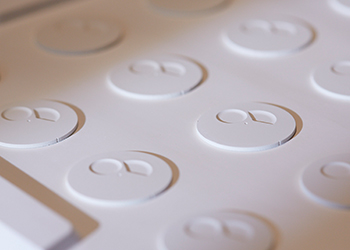

Molding
-
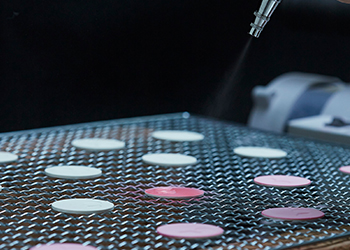

Glazed/Fired
-
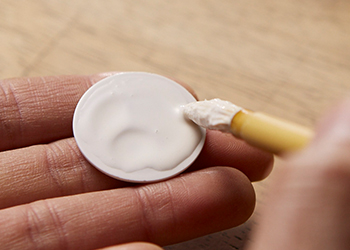

Finishing
In the finest tradition of Japanese craftsmanship, two new members of the Seiko Presage series feature Arita porcelain dials. These are thicker than traditional dials, which makes possible a gentle curve, as well as the deep recesses that house the power-reserve and date indicator of one model. Both versions pay homage to Seiko’s historic 1913 Laurel — Japan’s first wristwatch — with a striking red XII. Additionally, the blue numerals are ideally complemented by the dial’s subtle bluish tint, a pleasing shade that characterizes Arita Porcelain.
Some models displayed on this site may not be available in some regions.
Find out more on this special page




